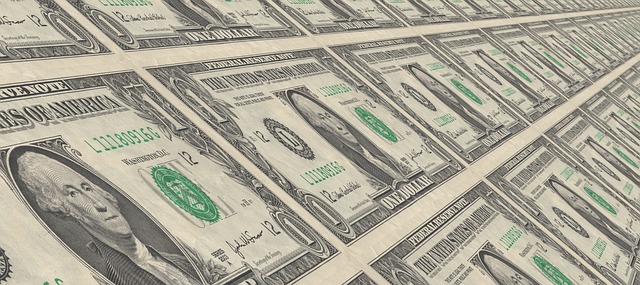Dollar Hits New Multi-Month Highs, Even As Analysts Forecast No Fed Rate Hike

Dollar rises to highest level since early March
by Ellie Ismaildou
The dollar rose Friday against its major rivals, reaching its highest level since early March as weak data from Europe softened the pound and the euro.
Investors also were shifting their focus to the Federal Reserve’s meeting on monetary policy, scheduled for next week.
The ICE U.S. Dollar Index (UUP) DXY, +0.52% a measure of the buck’s strength against a basket of six rival currencies, rose 0.5% to 97.43, its highest level since early March, according to FactSet data.
“We haven’t seen the dollar index this high since the market was projecting the Fed would hike rates,” said Jameel Ahmad, chief market analyst at FXTM.
Despite the dollar moves, Wall Street is currently pricing in a mere 2.4% probability that the U.S. central bank will raise interest rates at the conclusion of its policy meeting, according to the CME Group’s FedWatch Tool, which tracks Fed-funds futures prices.
But the theme of monetary-policy divergence, which means that the Fed is on a monetary-tightening path while other central banks in Europe and Japan are implementing easing policies, continued to support the dollar, analysts said.
An upbeat reading of U.S. manufacturing for July, which rose to its best level since October, helped to support the idea that a recent spate of better-than-expected reports may offer the Fed sufficient confidence sometime this year.
Still, some traders also viewed gains in the greenback as a function of technical factors.
“Markets are overestimating the extent to which global central banks will pump money into the economy,” Ahmad said. Still, the greenback is “enjoying a buying momentum,” in part fueled by technical reasons, which should push the dollar index above 98 in the near term, he said.
In Europe, the pound and euro tumbled against the dollar as European economic reports painted a mixed picture of the eurozone and British economies in the wake of the U.K.’s June 23 vote to sever its ties with the European Union.
A preliminary July reading of the eurozone composite purchasing managers index—the first since the U.K’s so-called Brexit referendum on June 23—came out better than expected, with French and German surveys beating economists estimates.
Markit’s PMI came in at a two-month low of 51.9, below a FactSet estimate of 52.1. A reading above 50 indicates an expansion in activity, while one below that level signals a contraction.
“The eurozone economy showed surprising resilience in the face of the U.K.’s vote to leave the EU and another terrorist attack in France,“ said Chris Williamson, Markit’s chief economist, referring to July 14 terror attack during a Bastille Day celebration in Nice.
But the euro (FXE) EURUSD, -0.5532% reversed early gains to move lower, breaking $1.10 to trade at $1.0966—its lowest level in June 24, the day after the unexpected Brexit outcome. That’s compared with $1.1009 late in New York.
There are “a lot of dollar bulls out there,” said John Doyle, director of markets at Tempus Inc. “Any move of the euro below $1.10 is a buying opportunity,” Doyle said.
The U.K. PMI reading, came in worse than expected, slipping into contraction territory. The flash manufacturing PMI fell to a 41-month low of 49.1 from 52.1 in June, but beat the forecast for a 48.7 reading The composite PMI fell to 47.7 versus 52.4 in June, the lowest reading in seven years.
The pound (FXB) GBPUSD, -0.9598% fell $1.3081 compared with $1.3192 late Thursday, while U.K. stocks on the FTSE 100 UKX, +0.46% also tumbled.
On Thursday, European Central Bank President Mario Draghi said the central bank was taking a wait-and-see approach to monetary policy in the wake of Brexit, while reiterating that the ECB stood ready to provide additional stimulus if needed.
Traders will be looking keenly ahead to a batch of central bank meetings next week, including the Fed’s two-day policy confab July 26-27, which could help determine the path for interest rates and the buck.
Meanwhile, the yen weakened against the dollar after strengthening Thursday after Bank of Japan Gov. Haruhiko Kuroda ruled out further easing plans referred to as “helicopter money,” in which the central bank would fund government spending directly.
The dollar (FXY) USDJPY, +0.33% was changing hands at ¥106.28, compared with ¥106.19 late Thursday in New York.
The greenback had fallen about 2% against the yen Thursday to ¥105.41, erasing much of gains earlier this week.
In a prerecorded interview with BBC radio, Kuroda said, “no need and no possibility for helicopter money.” Kuroda’s remarks in the BBC interview broadcast early Thursday were recorded in mid-June. The Bank of Japan’s policy setters are scheduled to meet on July 28-29.
The euro EURJPY, -0.22% was higher at ¥116.48 from ¥116.66 late Thursday.
Investors’ expectations have mounted for Tokyo to unveil an aggressive stimulus package later this month, especially after Prime Minister Shinzo Abe’s meeting earlier this month with former Federal Reserve Chairman Ben Bernanke, an advocate of monetization.
Elsewhere in Asia, the Chinese yuan USDCNY, +0.0105% strengthened against the buck, advancing to 6.67 per U.S. dollar, remaining below the psychologically important level of 6.7, that could trigger an intervention from the People’s Bank of China, according to some analysts. On Monday the Chinese currency dropped below 6.7 for the first time since 2010.
Courtesy of marketwatch.com
